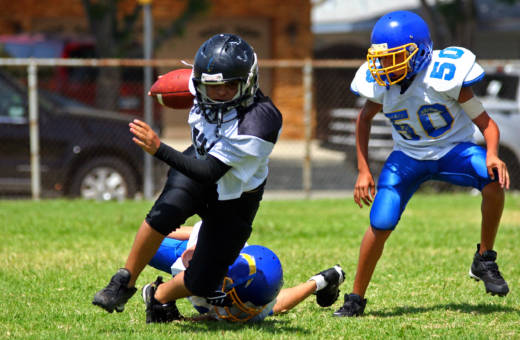The men were, on average, 51 years old at the time of the study. Those who started playing when younger demonstrated a twofold increase in risk for apathy and behavioral regulation and a threefold increase in risk for depression, compared with those who started playing later.
Significantly, men who went on to play in college or the pros were no more likely to have these problems than those who stopped playing after youth football.
Stern, the director of clinical research at Boston University’s CTE Center, said study participants were interviewed by phone and completed online questionnaires, a methodology that is not as reliable as face-to-face neuropsychological examinations.
More important, the participants chose to take part in the study, rather than being chosen at random, so they may have had neurological deficits that spurred their involvement in the research.
Other researchers pointed out this flaw as well, but said the study nonetheless warrants further investigation, if not stricter limits on youth participation in America’s most popular sport.
Tom Talavage, a professor of biomechanics at Purdue University who studies neurotrauma, said: “I’m not the least bit surprised by this.
“Intuitively, it’s pretty consistent with our impression of the old former football player — that he’s a little more volatile, a little more impulsive, maybe a little more moody.”
The findings are also consistent, he said, with his own recent research on middle-school football players that shows that even though younger children hit each other with less force than older ones, “because they’re smaller they’re getting essentially the same ‘experience,’ quote-unquote, as the high-school population.”
The researchers chose 12 as the age cutoff because, they said, the brain experiences a key period of development between 10 and 12. They also tracked changes in behavior for those who began playing at earlier and later ages, but said age 12 was associated with the most striking findings.
Another study published last year by researchers at Wake Forest School of Medicine involved MRI scans of middle-school football players’ brains; it showed changes related to non-concussive head impacts after a single season. (The research, which relied on a relatively small sample, did not examine a possible relationship between the brain changes and cognitive function.)
Joel Stitzel, one of the leaders of that research, said the new study is “important and informative,” and “helps motivate the need for more longitudinal study.”
Stitzel also noted that retrospective research like Stern’s fails to account for more recent rule changes in youth football, including limits on full-contact practices and more aggressive coaching on proper tackling techniques.
Pop Warner Little Scholars, which oversees what it describes as the nation’s oldest and most popular youth football, did not immediately return calls requesting comment, and Dr. Julian Bailes, the youth league’s medical director, was unavailable.
Both Pop Warner and USA Football, another youth organization, have implemented or tested significant rules changes in recent seasons.
Dara Dickstein, who researches neurodegenerative disease at the Icahn School of Medicine at Mount Sinai, acknowledged the “game has changed a lot” over time.
Still, she said, “it doesn’t really surprise me that the younger your age of first exposure is to football, the more impairment or cognitive deficits will show later in life.”
Despite safety concerns, proponents of youth football have pointed out the sport’s benefits, noting that, beyond the physical exercise, it instills a sense of teamwork, discipline, and camaraderie among players.
Stern has heard the arguments before.
The solution to this is not to have kids in a bubble, and have them not exercise,” he said. “Comaraderie, teamwork, confidence building, exercise — those things are really important. But playing tackle football is not the only way to get that.”
The study was funded by the National Institutes of Health. Some of the 21 co-authors disclosed possible conflicts of interest, including research funding and their work with the National Collegiate Athletic Association, National Football League, and NFL Players’ Association. Stern, for instance, is a member of the Mackey-White Committee of the NFL Players Association and is a paid consultant to pharmaceutical companies. Dr. Ann McKee has received funding from the NFL and is a member of the Mackey-White Committee. Dr. Robert Cantu is a paid consultant to the NFL’s Head Neck and Spine Committee and is a paid member of the Medical Science Committee for the NCAA Student-Athlete Concussion Injury Litigation.
This story was originally published by STAT, an online publication of Boston Globe Media that covers health, medicine, and scientific discovery.
